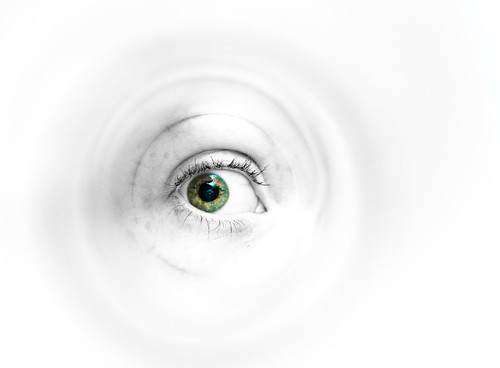
Today's post is going to be an exercise, to be sure as I try to explain as simply as I can the term aperture and how you control it. But first, let's define it. The simplest way to define aperture is this: How wide the hole is inside of your camera lens. If you've ever seen a James Bond film, where they show some dude running around with a camera on him that widens and narrows (before they get shot), then you've seen aperture in action.
In a camera, an aperture is inside of the lens itself and is made up of multiple blades which form an circular hole. It is the size of this hole that controls two major things in a photo:
1. The amount of light coming into the camera (which is what affects the exposure)
2. The depth of field, which is how you get those really cool blurry backgrounds in portraits and such.
Controlling the aperture is something normally done by the camera in an automatic mode. The camera will assess the amount of light that is available in the scene and then adjust the aperture size accordingly to allow enough light to take the picture. In most cases, the camera makes this adjustments based upon mathematical calculations on this amount of light.
In photography, the aperture has a measurement used to represent the width of the opening. This width is measured in units called F-Stops. For example: F/8.
The tricky part in understanding the measurement is that the smaller the number, the wider the aperture opening. So an F-Stop of F/1.8 is a larger opening than F/8.

If your goal is to get a lot of light into the camera for something such as shots indoors in low light, then you usually want a smaller number such as F/3.5 or F/2. Most cameras lenses can usually open their apertures as wide as F/3.5 and close them down to as far as F/16 or even F/32, depending on the camera lens. Some lenses are especially known for their wide aperture abilities, being able to open up to something such as F/1.8. These lenses are commonly known in photography as "fast lenses".
Another feature of a wider aperture is that it makes the depth of field more shallow. If you are taking a photo of a person and you would like to blur the background, then you will want to use the widest aperture (lowest number) that your lens will allow. This is one of the factors in helping achieve that goal (although keep in mind that there are still other factors to consider in getting that effect, that we will discuss in later posts).
Conversely, if you would like to have a very deep depth of field, so that you get everything in sharp focus in both the foreground and background such as in a landscape photo, then you would want to use a narrow aperture, such as F/8 or F/16. The trade off, of course is that this adjustment lets less light into the camera (remember the higher the number, the smaller the hole) and so you may need to adjust other settings to get this light into the camera.
So I know that this post is kind of dry in explaining aperture, but my hope is that it is at least enough information to help you understand just what it is. In our next post, I'll be talking about shutter speed, and how it relates to aperture in getting a good exposure. If you have any further questions related to this article, please let me know in the comments or in an e-mail and I'll try to answer them in a future post.
No comments:
Post a Comment